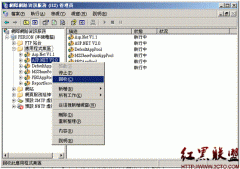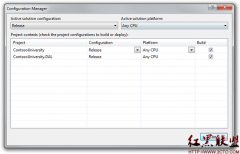ASP.NET性能优化之构建自定义文件缓存
ASP.NET的输出缓存(即静态HTML)在.NET4.0前一直是基于内存的。这意味着如果我们的站点含有大量的缓存,则很容易消耗掉本机内存。现在,借助于.NET4.0中的OutputCacheProvider,我们可以有多种选择创建自己的缓存。如,我们可以把HTML输出缓存存储到memcached分布式集群服务器,或者MongoDB中(一种常用的面向文档数据库,不妨阅读本篇aspx">http://msdn.microsoft.com/zh-cn/magazine/gg650661.aspx)。当然,我们也可以把缓存作为文件存储到硬盘上,考虑到可扩展性,这是一种最廉价的做法,本文就是介绍如果构建自定义文件缓存。
1:OutputCacheProvider
OutputCacheProvider是一个抽象基类,我们需要override其中的四个方法,它们分别是:
Add 方法,将指定项插入输出缓存中。
Get 方法,返回对输出缓存中指定项的引用。
Remove 方法,从输出缓存中移除指定项。
Set 方法,将指定项插入输出缓存中,如果该项已缓存,则覆盖该项。
2:创建自己的文件缓存处理类
该类型为FileCacheProvider,代码如下:
public class FileCacheProvider : OutputCacheProvider
{
private static readonly ILog log = LogManager.GetLogger(System.Reflection.MethodBase.GetCurrentMethod().DeclaringType);
public override void Initialize(string name, NameValueCollection attributes)
{
base.Initialize(name, attributes);
CachePath = HttpContext.Current.Server.MapPath(attributes["cachePath"]);
}
public override object Add(string key, object entry, DateTime utcExpiry)
{
Object obj = Get(key);
if (obj != null) //这一步很重要
{
return obj;
}
Set(key,entry,utcExpiry);
return entry;
}
public override object Get(string key)
{
string path = ConvertKeyToPath(key);
if (!File.Exists(path))
{
return null;
}
CacheItem item = null;
using (FileStream file = File.OpenRead(path))
{
var formatter = new BinaryFormatter();
item = (CacheItem)formatter.Deserialize(file);
}
if (item.ExpiryDate <= DateTime.Now.ToUniversalTime())
{
log.Info(item.ExpiryDate + "*" + key);
Remove(key);
return null;
}
return item.Item;
}
public override void Set(string key, object entry, DateTime utcExpiry)
{
CacheItem item = new CacheItem(entry, utcExpiry);
string pat
相关新闻>>
- 发表评论
-
- 最新评论 进入详细评论页>>



